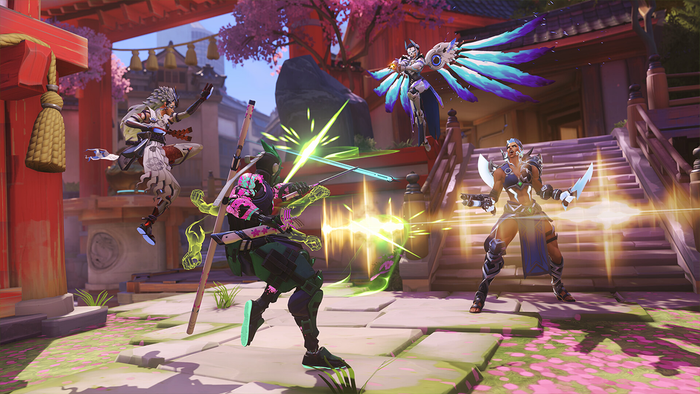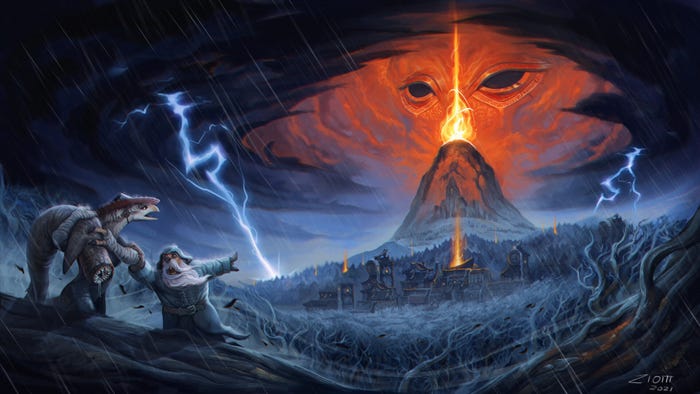
Featured Blog | This community-written post highlights the best of what the game industry has to offer. Read more like it on the Game Developer Blogs.
A quick look at the Australian censorship situation. The lack of R18+ rating is depressingly drawn out, and embodies a history of cynical media manipulation. As we head into 2011, we are no closer to good governance on the issue than we were in 1994.

Australia is one of two Western countries not to have an adult classification rating for videogames. Rather, our system allows games to be classified for young adults under the MA15+ category or refused classification entirely. Some high-profile games that were anticipated by many adult Australians are refused classification, and others are adjusted by publishers and developers of games to sneak into the MA15+ category.
The history of this classification quirk is so long and storied that anybody reading this piece is more than familiar with its peculiarities. It causes a huge amount of distress to those looking forward to games with adult content, and is a favourite topic for representatives from religious and community groups whose understanding and interest of technology obviously concerns protecting their set of values.
For consumers of games, the problem is changing all the time. International imports are easier than ever, no matter how hard customs officials work to enforce the law. Piracy of PC games, needing absolutely no encouragement, gives young Australians one more reason to justify their downloading of these titles. The first point we need to make is that the two lists of 'what games are classified' and 'what games Australians actually play' have a great deal of overlap, but they by no means the same list. There is no deluding ourselves that the entire classification system has the same relevance it once did. It is a useful vestige of a prior era of media culture - and one I think we should continue to use - but it is a vestige.
Presumed Innocent
Children and young adults these days have near-unlimited access to hyper-violent media including games, pornography and recipes for all manner of mischief. That is the nature of childhood today. No hard tools exist to really protect them, from net filters to censorships schemes. What does exist to protect them is parents and educators building a set of values about how to use media responsibly from a young age. Including how to be their own filters and censors. Of course parents have to be responsible about what's available, and use their judgement as they have always done. But the age of easy answers is over, and its never coming back. The hard way, the difficult way, is realising what matters is the well-being of children - and the way to protect it has actually changed radically since we invented the classification of computer games.
When presented with the data on how young adults pirate media, and how violent PC games feature so heavily in their downloading, researchers have been thoroughly dismissed by religious and community groups. Its a minor issue, they say. Its only a few who get around the system, they say. Well, I actually really hope they are right and the volumes of data are wrong. Otherwise, the young adults who are pirating games the most, the ones who can get the games banned here the easiest - are those right at the bottom of the socio-economic spectrum, who disproportionately experience and create the violence we say we're trying to stop. It would be a cruel irony if that were the case.
Last week, Barbara Biggins wrote a piece for Australian Broadcast Corporation's Drum website on March 31 which accused the pro-R18+ lobby of manipulating public opinion on the issue. Her point was that where previously, pro-R18+ advocates made the case for adult freedoms, they were now pushing the case that the R18+ would protect kids. This subtle shift of tactic, she asserts, is a manipulation of the facts for political purposes. Lets look at just how right she is.
A History of Stupid
When computer games were first classified, we had parent's groups on Australian television - on the Darryn Hinch program, on A Current Affair, on 60 Minutes - ringing warning bells about the explosion of violent video games. Throughout the summer of 1993, as Australian teenagers were playing with Mortal Kombat in arcades and the less-bloody Street Fighter 2 was allowing young kids to form competitions, these groups were connecting with their American counterparts and finding out the best method for raising the alarm. For their part, computer game publishers thrived on the controversy, making the games more and more violent to give them the credibility and cool that the alarm around violent videogames was denying them.
We entered a vicious spiral where games were made to court controversy, the controversy helped the sales, and elements videogame culture made violence a standard of pride. Gamers began to see violent games as a response to the hypocrisy of the older generations - they quickly became a adolescent threshold by which you could make sense of the world. Two sociological studies at the time (in 1993) cited young adults' relationship to violent news on television as a major factor in their seeking out violent games, a symbiotic relationship we still refuse to acknowledge.
The fact that the classification system is woefully inadequate to understand what games are - they are individual pieces of software all designed and performing very differently with different senses of impact and immersion that totally deform any attempt to classify them together - is not lost on Barbara Biggins. She rightly points out that interactivity is the marshalling point for the different systems and we perhaps should have kept a separate rating system. I happen to agree. Eight years ago, I spoke before Federal politicians looking for alternatives to the system which was failing parents and young people across the country. Eventually, a detailed review system that would have been a great improvement was rejected on the basis of it being outside of the scope of the current laws. Fair enough, but in those years, games have been radically transformed - not just one or twice but many many times by different technologies and the change of internet technologies. While we run down the clock looking for solutions, a generation of people looking for guidance on the issue go from the ages of 10 to 18. You would be hard-pressed to argue that they worked.
I don't blame Barbara Biggins or hold her position in any great contempt. Its a very familiar set of arguments from a very familiar debate. She makes one interesting point worth discussing. It is that the rating system slipped in the intervening years due to changes in the system in 2003 and the MA15+ rating now has far more violent media than it did. This is true, by any accounts. Regular fans of this media circus will remember why that occurred - one of the many many shifts in computer game technology (the arrival of new game consoles like the
Playstation 2) was successful because it was capitalising on the fact that the average age of game players in countries like Australia had creeped over 30 for the first time. Adult games were, and still are, the norm. Even bright and colourful games contain complex adult concepts of course - but by 2003, adult content games of all kinds were dominating the marketplace. If we had kept the 1999 wording as Barbara suggest, the obvious result is that we would have lost millions of local sales of videogames and the millions of tax dollars that goes with it. But since we're on a moral crusade, we don't care about tax. The real goal is the reduction of the violence that young people experience and create.
It Could Be Worse
Gamasutra commenters can, as an exercise, go through the list of popular games from 1999-2011 and see how many would have been banned if we had kept the delineation of medium impact violence. As Biggins well knows, that definition precluded 'sadistic violence after death', 'fatal violence against the unarmed', 'unnecessary gore' (as opposed to the necessary kind), 'sexual depictions and protracted nudity', 'drug use and or specific references', 'explicit links between sex and violence'. If we take out all the games in that period which featured such violence, maybe our commenters could enlighten us to how less violent our society would have been.
I am beginning to lose hope Australia will get an R18+ rating for games. We have a culture of cynical manipulation around the issue that is firmly entrenched. Twenty years ago, it began with cynicism, and it continues to this day. How children and young adults use media, choose games, play games and go about their lives with and without parental guidance has been put aside in favour of easy answers.
Usually, one can say that the debates surrounding this or that media question are very complex - but in reality, the reasons for and against the current classification system have not really evolved since games were first classified. Barbara Biggins complains that the media has been manipulated in the recent debate. I respond by saying that the entire question of violent videogames is at its core, one of media manipulation. Many people make money and other types of useful currency from them - videogame makers and publishers of course, but also the politicians striking out against youth media, the religious groups crusading against moral decay, academics paid to study them, media sources lining up to cover the issue in the same identical way for nearly twenty years. It suits many parties for the controversy to continue, and protects absolutely no one, in any way. No matter how damaging and diseased the fantasy, no matter how many young people are thrown under the bus, we will continue to recite this tired debate until the Federal Government decides to do the best thing by its young people and parents.
I advocate a 21st century classification system. Such a system would be centred on a free-access website that lists information on media that is detailed, comprehensive and careful. It would allow people to register and add comments so that parents could see both the trusted information on the site and the opinions of other parents. Parents use such a website for schools, and as controversial as the ethics of it are, the delivery model is sound. This system would retain age ratings and include an R18+ category for games which have depictions of and high impact presentation of drugs, sex or violence. This will dismay many of my pro R18+ colleagues, but I believe some very popular MA15+ videogames should be rated R18+. We can go online to local servers of Call of Duty: Black Ops games and listen to the voices of the players, some as young as 5 or 6 years old to see just how well the current classification system is working. But with a more open and informative system, the power returns to the hands of the people who need it the most, and away from a cynical and cyclical media game.
Read more about:
Featured BlogsAbout the Author(s)
You May Also Like









